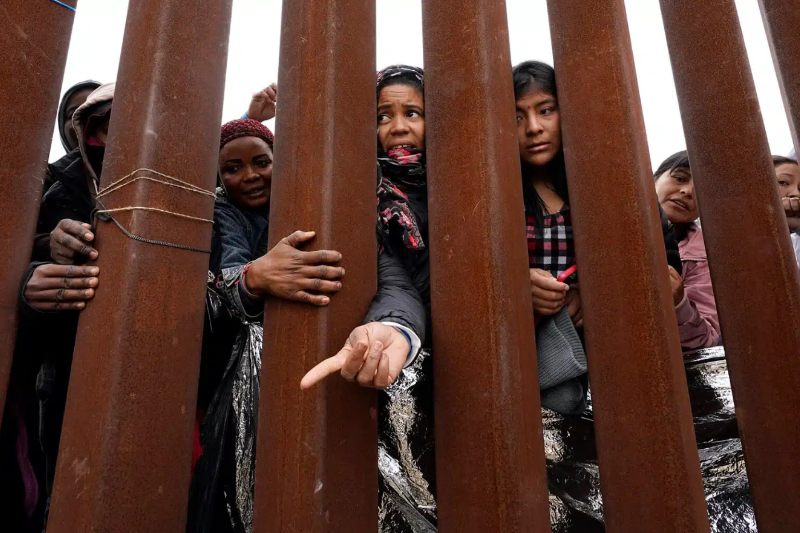

christians make up nearly half of global migrants, study finds
The landscape of migration is not as uniform as one might expect, with Christians migrating to new homes across borders in numbers that are fairly representative. A Pew Research Center study did much to further one’s understanding of that phenomenon by indicating that nearly half of all international migrants are Christians. This has been a phenomenon that challenges the usual perception and puts before us the junctures among religion, geography, and migration.
The study reported that nearly 47 percent of migrants around the world are Christians. That number translated to 130 million in 2020, up dramatically from several decades earlier. The PRC defined migrants as those people living outside their country of birth, at any time between 1990 and 2020, regardless of whether they left their homeland recently or decades ago.
This is very large, with the PRC reporting, “More than 280 million people, or 3.6% of the world’s population, are international migrants.” This number is not only descriptive of increasing data regarding global mobility, but it also highlights that Christians are represented disproportionately within these numbers.
The study found some of the main country-of-origin groups from among Christian migrants included those who are from Mexico, Russia, the Philippines, and Venezuela and Poland. Interestingly, these were migrants who moved to nations that already have essentially Christian populations. “There are a large number of Christian-majority countries in the world that may attract Christian migrants from elsewhere,” Stephanie Kramer, co-author, explained to La Croix.
Other major host countries soliciting Christian migrants from around the world include the United States, Germany, Russia (a former Soviet Union), the UK and Canada. The largest Christian migration highway was found to exist between Mexico and the United States, with 11 million Mexican Christians residing in the U.S. in 2020.
The over-representation of Christians among international migrants can be due to many reasons such as the one noted by Kramer, who detailed that “Christians are scattered throughout the world”. There are, for example, a religious persecution in some countries that will be hindering migrations, but speed up for economic and political reasons, for environmental changes that do not have direct religious roots but happen to take place in a Christian population, a precedent selected through history, among others.
Research indicates the typical movement of people to countries where the religious majority share their faith. In this direction, Muslim migrants move to Muslim-majority countries, like the example of Saudi Arabia. Jewish migrants move to the state of Israel, with over 50% of all Jewish immigrants currently found in Israel and Palestine.
This pattern is very prominent for Muslim countries; with the exception of receiving other Muslims, the Middle East and North Africa attract 75% of such migrants.
In Europe, the religious makeup of migrants tells a more complex story. While 56% of migrants to Europe are Christians, 18% are Muslims, and 20% have no religion, the difference comes in terms of intra-continental and extra-European migration: 70% within Europe are Christian; from outside Europe, 40% are Christian, 34% Muslim.
Migration has been one of the recurring themes of the pontificate of Pope Francis. He has urged, without any stop since 2013, host countries to open their doors to migrants citing the Christian duty of charity for people who cannot pay back. This attitude makes him represent an extension of the Christian compassion toward the universal dimension of faith, as demonstrated by the patterns of migration disclosed by the PRC research.
As the world continues grappling with the complexity of international migration, deciphering the religious demographics of these movements becomes ever more vital. In its capacity to debunk preconceived ideas, the PRC study helped in highlighting the tapestry of faiths involved in the shaping of global migration patterns.
Blockades on the borders of the country are to be put in place on April 28 if they do not…
After putting a 12% import tax on steel items for 200 days the Indian steel sector begins its path to…
To resolve the deepening crisis of Afghanistan, which is the displacement of local people as the migrants, a collaborative meeting…
The HSR project to connect Kuala Lumpur and Singapore creates better transportation for all regional areas in Malaysia. Government records…
Scottish Water staff started their 48-hour work strike at midnight due to their escalating pay negotiation problems with the organization.…
The Trump administration has selected Kansas City as its main destination to test federal workforce reduction measures. Through the leadership…
This website uses cookies.
Read More